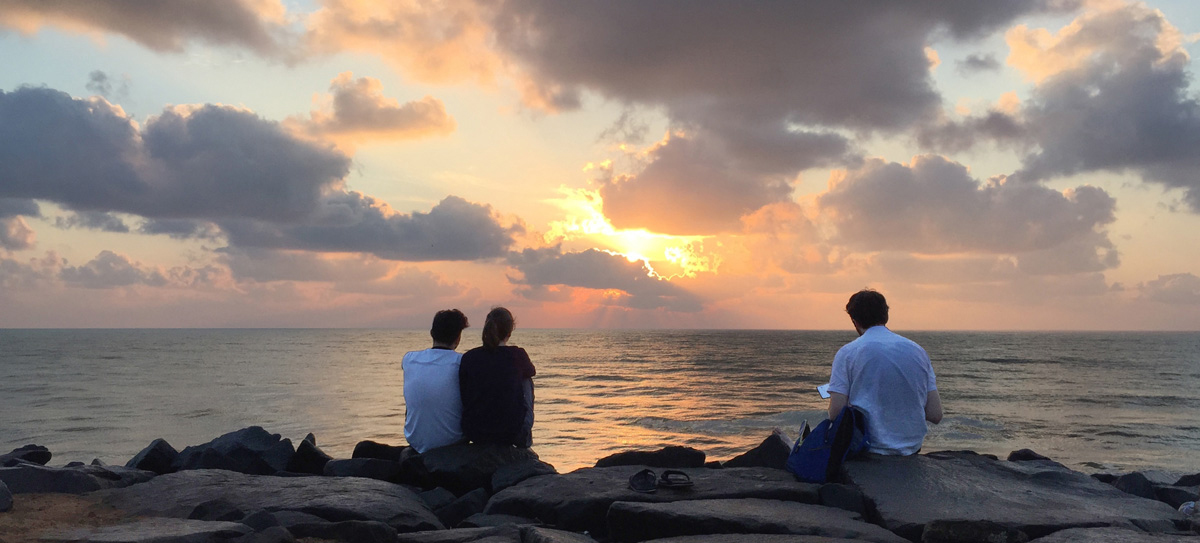
VANAKKAM
Spring 2015 | Bodhidharma School | Aleyendal Village Tamil Nadu INDIA
Project Team: Rebecca Brown, Felipe Calderon, Pearlene Cheah, Alex Dallas, Ricardo Diaz, Joel Effland, Siwen Fang, Angeliki Giannisi, Tobias Gutheil, Claire Miller, Ben Parker, Alex Warr, Henry Wen
Today one in six people call India home. Of those, one and six are Dalits—about 220 million people (two-thirds USA’s population). Centuries old barriers separate Dalits (formerly Untouchables) from their neighbors. And while the caste system was officially outlawed in 1995, most Dalits are still discriminated against, particularly in rural areas where half of India’s population lives. Dalit communities typically have substandard housing, no running water or toilets.
Ninety percent of India’s schools report discrimination against Dalits. As a consequence, less than half graduate from primary schools. Of those, only about half finish high school. It’s not just discrimination though since children work from a young age to help their families squeak by. Addressing some of this Venerable Dr. Pannavati Bhikkhuni, who heads the Embracing Simplicity Hermitage in Hendersonville, NC works with Dalits in the Tiruvannamalai region of Tamil Nadu. To help overcome a few their basic health issues, Pannavati’s group has built wells and toilets for Dalit villages.
Advancing her work further, Pannavati recently raised funds to build a K-12 advanced placement school for young Dalits. To help with this, UTSOA students were asked to design the school. Early in the semester Pannavati met with students to describe the school’s needs. Afterward, they developed preliminary designs to take to India for further input from the village elders and community. To get a deeper sense of the place in which they were to work, students first visited Pondicherry on the Bay of Bengal where they toured Golconde that’s part of the Sri Aurobindo Ashram. Golconde was India’s first modern design as welll as its first fully cast-in-place structure. Nearby, at the Auroville Earth Institute, students got hands-on instruction about local building technologies by making compressed earth blocks and lightweight ferro-cement roof panels. A low-tech approach along with small-scale buildings shaped the design since villagers will build the school. Along with compressed earth block, bamboo and recycled plastic bottles abundant in India will be used for shade screens and walls.
As part of the field-based approach that tests the design’s poetic potential, students constructed two projects during the semester. There was a full-scale mockup to test material, proportion and alternative technologies. Using steel in lieu of concrete, student’s tested a bamboo shade screen they’d designed for the school’s outdoor teaching area. For the hot humid climate of Tamil Nadu, a breathable wall was also tested using recycled plastic bottles. (Glass was used in the mock up as a way to test material alternatives.) While in India students worked with local craftsmen to help build new toilets at a grade school close by the proposed school design site, which never had toilets. Students also repainted two Dalit schools badly in need of repair.
The school was designed with local cultural and environment in mind. The school’s curriculum will teach a place-based approach meant to raise bioregional awareness and entrepreneurship. Largely off the grid, the school will need to use solar energy, water capture and gray water reuse. An edible permaculture landscape, composting and passive bio-climactic design strategies further help promote independence and resilience. As the design’s poetic foundation, a regenerative design philosophy is embedded throughout, not just the campus design, but in the school’s learning programs where Dalit students not only grow their own food but are also taught sustainable practices for their daily lives.
After getting input from the community and visiting the site, students came back to Austin and revised their design accordingly (final design). The first phase of the school’s construction will begin at the end of monsoon season 2015. On completion the school will graduate about one hundred students yearly.